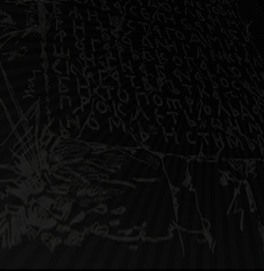The best known, and certainly the most valuable monuments of medieval art in Bosnia and Herzegovina are the Stećaks. Stećaks are monumental gravestones, usually stone monoliths of varying shapes and sizes. There are about 60.000 tombstones organized in large necropolis all over Bosnia and Herzegovina.
The Stećak necropolises are a mysterious aspect of Bosnian and Herzegovinian history. The most intriguing are their origins, whom they belonged, who was buried under them, as well as engraved symbols, and mystic messages on them. These engravings inform us of social differences of those that were buried under them, but also of religious differences.
Historic period
The first appearance of stecaks has happened around the second half of 12th century. First period of their development lasts also through the 13th century. The blossom of their creation includes second half of 14th and first half of 15th century. In 16th century this kind of art descents and at the end of the century completely disappears.
Territory of placement and numbers
Bosnia and Herzegovina is the biggest treasury of stecaks. The whole territory, except several border areas on the North is rich with stecaks.
There are 2612 locations in BH containing stecaks. All those places have 58547 monuments. Majority of them becomes from regions in Herzegovina, particularly from Nevesinje and Konjic with over 3000 artifacts. In Bosnia the richest region is Rogatica with 2628 stecaks. Other areas with reasonably large amount of monuments are Livno (2949), Trebinje (2406), Stolac (2319), Gacko (2219), Sokolac (1966), Kalinovik (1793) i Bileća (1739). Relatively smallest number of stecaks is in the North and North West regions of Bosnia and Herzegovina.
Stecaks were characteristic for medieval Bosnia and Hum and spread around all its territory.
Shapes of stecaks
Stecaks from Bosnia and Herzegovina are the most versatile and best carved. Those from Herzegovina are advanced in quality and number, particularly in the eastern part, around Stolac, Ljubinje, Bileća and Trebinje. All basic shapes appear there, but the most numerous are boxes (64%) and panels. Out of the standing shapes, there are many crosses and very few pillars. Many panels are relatively large and boxes are high or very high. Among crosses particularly evident are those where the upstanding part is shaped as human head (around Nevesinje, Gacko and Bileća). So called double and single “sljemenjak”, as well as boxes, almost do not exist here. There are also very few amorphous and less carved monuments on the west from river Neretva (Grude, Posušje).
In Central Bosnia there are all shapes of stecaks, mostly boxes (77%) and least pillars and crosses. There are also a very few panels. Many boxes and panels are not much carved. Majority of boxes are middle size or short. Sljemenjak-s are well carves, not high, and some of them have two or three foundations (Ilijaš). Crosses are mostly originally shaped, with big round head and slightly shaped horizontal parts, and placed in the region of Zenica-Travnik. Amorphous shapes are most similar to the slightly carved boxes and there is significant number of them. In western Bosnia there are also all basic shapes, most of them boxes, and pillars and crosses are rare. The region has many less carved and amorphous examples. Sljemenjak-s are mostly curved and boxes are simple. In eastern Bosnia there are many boxes and pillars, as well as amorphous examples, most of them standing. Boxes are simple and sljemenjak-s low and skewed towards the bottom. Pillars have many various shapes. Crosses are very rare here. The largest number is of double and combined sljemenjak-s and boxes.
Decorations of stecaks
In Bosnia and Herzegovina 7,8% of all stecaks are decorated. The shape most often used for decorating was the cross, then sljemenjak and after the box, pillar and panel. Amorphous stecaks have no decorations. The percentage of decorated stecaks is least in central and western Bosnia, except the Kupres region. Stecaks from Herzegovina are more decorated than the Bosnian ones.
Most frequent ornaments in almost all parts of Bosnia and Herzegovina are motives of crescent, rosette (star), circle (sun) and cross. Stecaks from Herzegovina are decorated by curved wine with three leaf groups, arcades and twisted tapes, shields and swords, representations of deers and horses, and scenes of hunting, folk dances and tournaments. Rare are the motives of spirales and floral ornaments. Specific for south-east Herzegovina are arrays of rosette in crowns and webs of romboids, and for western Herzegovina solar or lunar motives on horizontal sides of boxes and panels, with those sides divided to orthogonal fields. According to the selection of decorative motives and their composition, drawing, engrawing and other figurative feautures, it is certain that in Herzegovina existed several carving centers.
We can say that Bosnian stecaks have many tapes and borders made of skewed and zigzag dashes, as well as spiral and floral stylizations, and they lack with curved wines with three leaf groups, arcades and figural representations, have not many shields, swords and arcs. One part of western Bosnia is characterized with stylized lilies, and majority of east Bosnia with floral motives, particularly double spirals combined with rosettes, crosses and tufts. Instead of arcades representing house at the coast, in many parts of eastern Bosnia there is a motive of wood as main characteristic of Bosnian wooden house.
Stecak signs
Text signs on stecaks are written in the native language using the old Bosnian Cyrillic alphabet, so called “bosančica”. There are 323 signs in whole Bosnia and Herzegovina, twice more in Herzegovina than in Bosnia.
|


